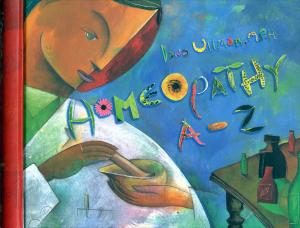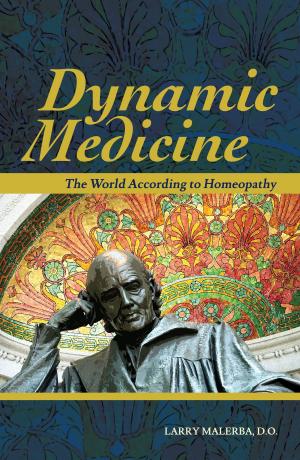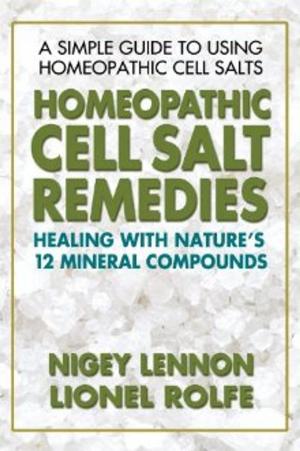MIT HYPOTHESIS- Evidences From Research Database
Nonfiction, Health & Well Being, Health, Alternative & Holistic Health, Homeopathy| Author: | Chandran K C | ISBN: | 9780463501030 |
| Publisher: | Chandran K C | Publication: | June 15, 2018 |
| Imprint: | Smashwords Edition | Language: | English |
| Author: | Chandran K C |
| ISBN: | 9780463501030 |
| Publisher: | Chandran K C |
| Publication: | June 15, 2018 |
| Imprint: | Smashwords Edition |
| Language: | English |
According to MIT HYPOTHESIS, active principles of post-avogadro potentized drugs are MOLECULAR IMPRINTS of individual chemical molecules contained in the drug substances used for potentization. As per this hypothesis, 'molecular imprints' are hydrogen-bonded supramolecular formations of water-ethyl alcohol molecules, into which the three-dimensional spacial conformations of drug molecules are imprinted or engraved as nanocavities, through a process of host-guest interactions or MOLECULAR IMPRINTING involved in the process of potentization. These 'molecular imprints' can act as artificial binding sites or key holes for binding to the original drug molecules as well as any pathogenic molecule conformationally similar to the drug molecules. When applied as therapeutic agent, these molecular imprints specifically bind to the pathogenic molecules having conformational affinity, thereby deactivating them and relieving the biological molecules from pathological molecular inhibitions. This is the biological mechanism of homeopathic cure as proposed by MIT HYPOTHESIS.
Actually, the biological mechanism of cure proposed in this model is not a new idea. It is well accepted in modern molecular medicine and pharmacology, and is the basis of target-specific drug designing techniques currently very popular in pharmaceutical researches. There remains nothing to be proved on this idea.
Molecular imprinting in polymers (MIP) also is recently a very popular research area, a technique used in developing artificial binding sites in polymer matrices through a process of molecular level 'host-guest' interactions. These 'molecular imprinted polymers' are currently utilized in various laboratory procedures as molecular binding and filtering agents. What I have been trying to do by MIT hypothesis is to adapt these well-accepted scientific concepts into the theoretical frame work of homeopathy, so that a scientific model could be developed to explain the biological mechanism of homeopathic cure. MIT hypothesis explains homeopathic potentization in terms of 'molecular imprinting in water', and homeopathic cure in terms of removal of molecular inhibitions. Only thing remaining to be scientifically proved is that potentized homeopathic drugs contain 'molecular imprints'. It raises the question whether water-ethyl alcohol mixture can act as a medium for molecular imprinting, similar to polymers. Various studies regarding supra molecular properties of water indicate some 'polymer-like' properties of water and formations of hydrogen-bonded nanoclusters in a micro-environment, which obviously opens up possibilities of molecular imprinting in water-ethyl alcohol matrix.
According to MIT HYPOTHESIS, active principles of post-avogadro potentized drugs are MOLECULAR IMPRINTS of individual chemical molecules contained in the drug substances used for potentization. As per this hypothesis, 'molecular imprints' are hydrogen-bonded supramolecular formations of water-ethyl alcohol molecules, into which the three-dimensional spacial conformations of drug molecules are imprinted or engraved as nanocavities, through a process of host-guest interactions or MOLECULAR IMPRINTING involved in the process of potentization. These 'molecular imprints' can act as artificial binding sites or key holes for binding to the original drug molecules as well as any pathogenic molecule conformationally similar to the drug molecules. When applied as therapeutic agent, these molecular imprints specifically bind to the pathogenic molecules having conformational affinity, thereby deactivating them and relieving the biological molecules from pathological molecular inhibitions. This is the biological mechanism of homeopathic cure as proposed by MIT HYPOTHESIS.
Actually, the biological mechanism of cure proposed in this model is not a new idea. It is well accepted in modern molecular medicine and pharmacology, and is the basis of target-specific drug designing techniques currently very popular in pharmaceutical researches. There remains nothing to be proved on this idea.
Molecular imprinting in polymers (MIP) also is recently a very popular research area, a technique used in developing artificial binding sites in polymer matrices through a process of molecular level 'host-guest' interactions. These 'molecular imprinted polymers' are currently utilized in various laboratory procedures as molecular binding and filtering agents. What I have been trying to do by MIT hypothesis is to adapt these well-accepted scientific concepts into the theoretical frame work of homeopathy, so that a scientific model could be developed to explain the biological mechanism of homeopathic cure. MIT hypothesis explains homeopathic potentization in terms of 'molecular imprinting in water', and homeopathic cure in terms of removal of molecular inhibitions. Only thing remaining to be scientifically proved is that potentized homeopathic drugs contain 'molecular imprints'. It raises the question whether water-ethyl alcohol mixture can act as a medium for molecular imprinting, similar to polymers. Various studies regarding supra molecular properties of water indicate some 'polymer-like' properties of water and formations of hydrogen-bonded nanoclusters in a micro-environment, which obviously opens up possibilities of molecular imprinting in water-ethyl alcohol matrix.















